Key takeaways:
- The breakdancing community promotes solidarity, encouraging members to support each other’s growth and navigate challenges together.
- Dancers often face mental and physical obstacles, such as mastering complex moves and overcoming the fear of judgment during performances.
- Personal connections and mentorship within the community enhance learning, foster trust, and build lasting relationships.
- Success in breakdancing is often found in moments of improvisation and overcoming failures, highlighting the importance of patience and perseverance.
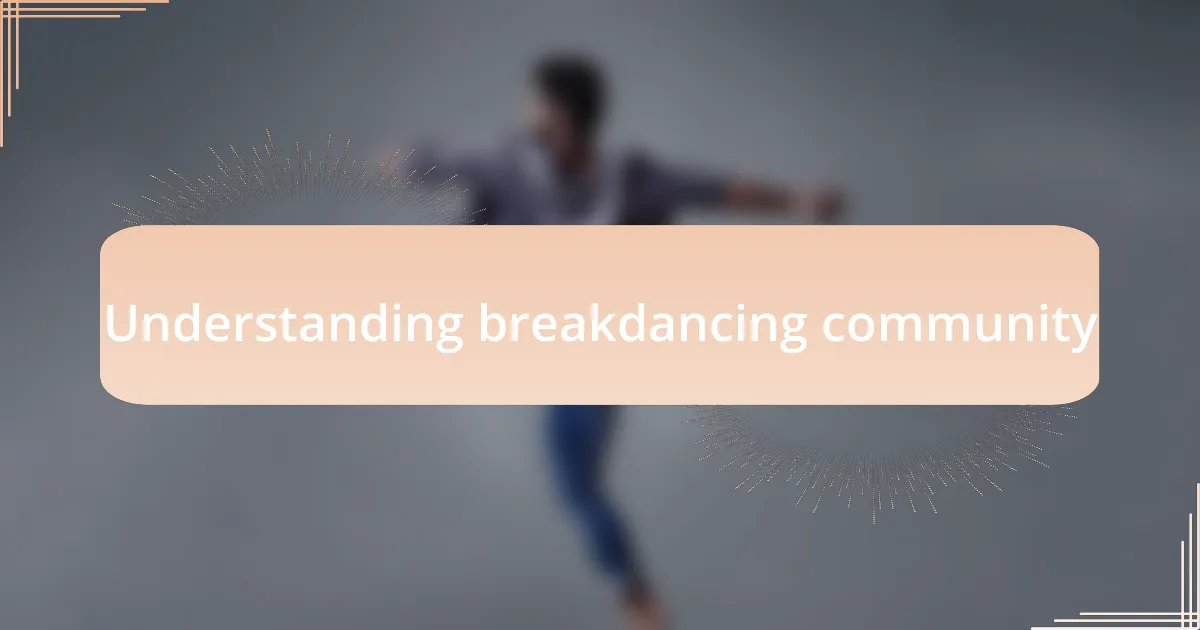
Understanding breakdancing community
The breakdancing community is a vibrant tapestry woven together by shared passion and dedication. When I first stepped into a cypher, the energy was palpable; it felt like everyone spoke the same language, one that transcended words. Have you ever felt that connection when surrounded by other dancers? It’s exhilarating to be part of something so alive.
Each member brings their unique story, skills, and influences to the floor, creating an atmosphere of mutual respect and growth. I remember watching a newcomer struggle to find their rhythm; rather than judging, the community rallied around them, offering tips and encouragement. Isn’t it inspiring how we lift each other up, proving that breakdancing is as much about solidarity as it is about self-expression?
Understanding the dynamics within this community requires looking beyond the moves. It’s about the friendships forged and the battles fought—not just on the dance floor but also in life. Reflecting on my own journey, I often wonder how many others have found their voice through breakdancing. The support system we build helps us navigate our own challenges, making the community a haven for creativity and resilience.
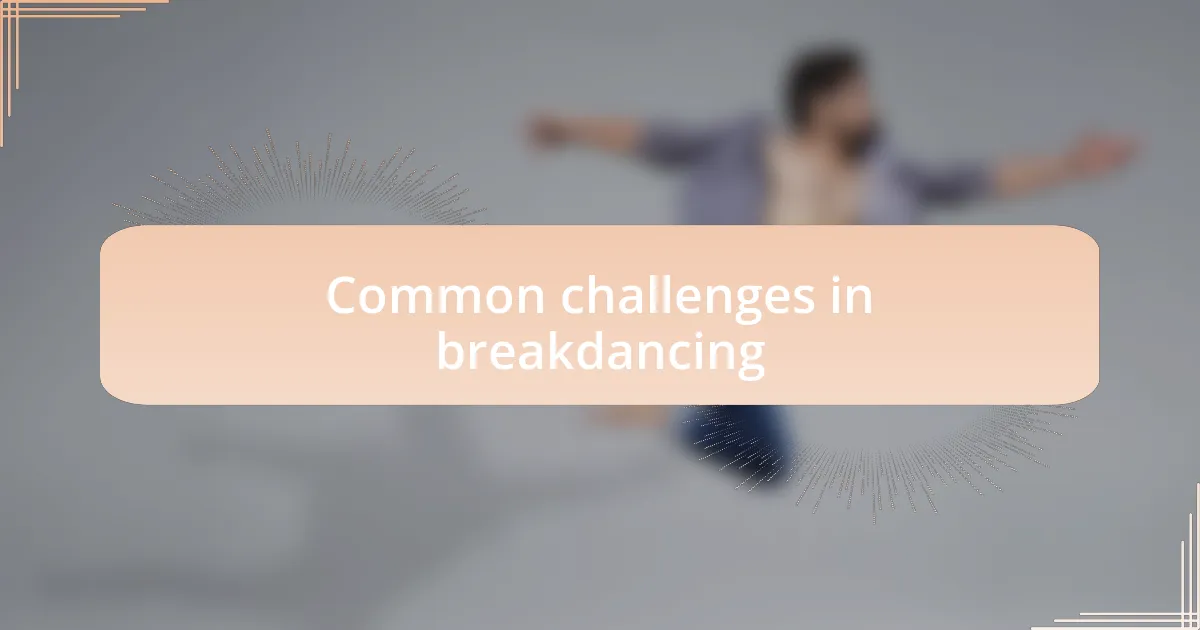
Common challenges in breakdancing
It’s not uncommon for dancers to face the challenge of mastering complex moves. I remember being stuck on a particular power move for weeks, feeling frustrated with every failed attempt. Has that ever happened to you? This struggle can make anyone question their dedication, but it also teaches perseverance.
Another significant hurdle is the fear of judgment during battles or performances. I used to feel my heart racing every time I stepped into a circle, anxious about how I’d be perceived. It often felt like I was laying bare my soul, vulnerable to the opinions of others. Recognizing this fear can be liberating, as I’ve learned that everyone in the cypher is more focused on the dance than critiquing my every move.
Additionally, injuries are an unfortunate part of the journey. I’ve experienced a couple of sprains that sidelined me for weeks, forcing me to miss out on sessions and battles. This gives rise to the question—how do we maintain our love for dancing even when our bodies don’t cooperate? It’s crucial to develop a balance between pushing our limits and caring for our physical health to sustain our passion in the long run.
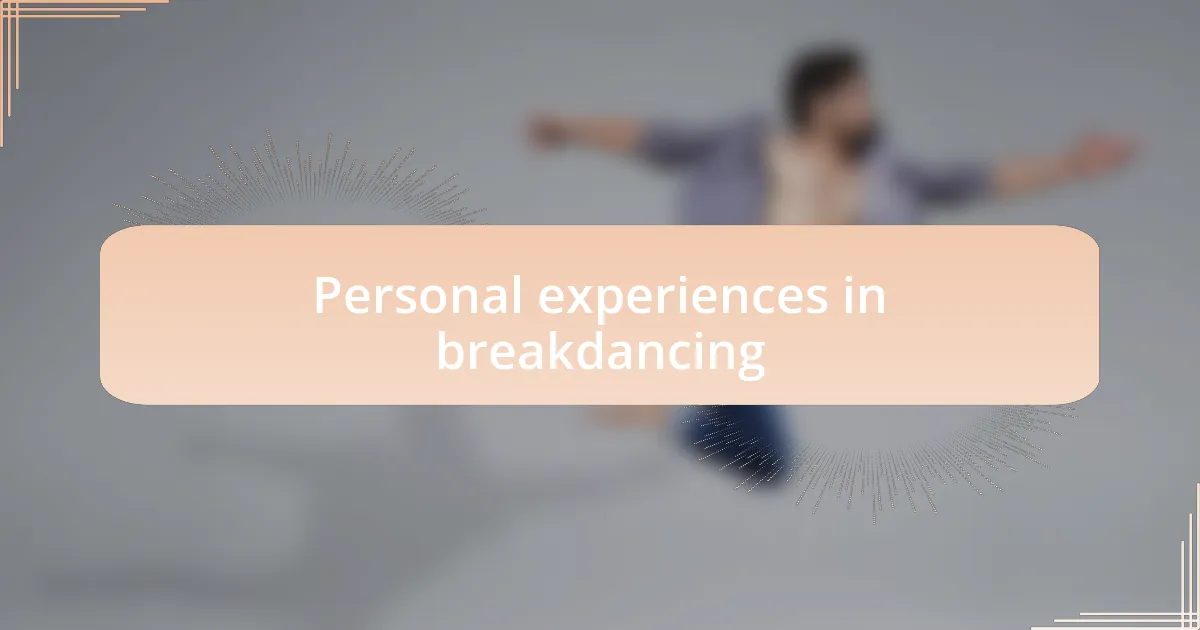
Personal experiences in breakdancing
Diving into breakdancing, I quickly realized that my biggest struggle was the mental block while learning new techniques. I remember when I first tried to learn the headspin; I was convinced it was impossible after countless attempts left me dizzy and frustrated. Why is it that our minds can betray us just when we think we’re getting the hang of things?
Another experience that left a significant mark was forming connections within the community. I often felt like an outsider in the beginning, unsure of how to approach seasoned dancers. But those moments of vulnerability during friendly exchanges turned into some of my most cherished memories, reminding me that we all share similar fears and aspirations as we break on the floor together.
Looking back, the process of improvisation has certainly been a double-edged sword for me. There was a time when I felt paralyzed by the thought of not being perfect during a cypher. Yet, I’ve learned that the beauty of breakdancing lies in those spontaneous moments—when I take a risk and just let the music guide me. It makes me wonder, have you ever let go in a way that completely transformed your performance?
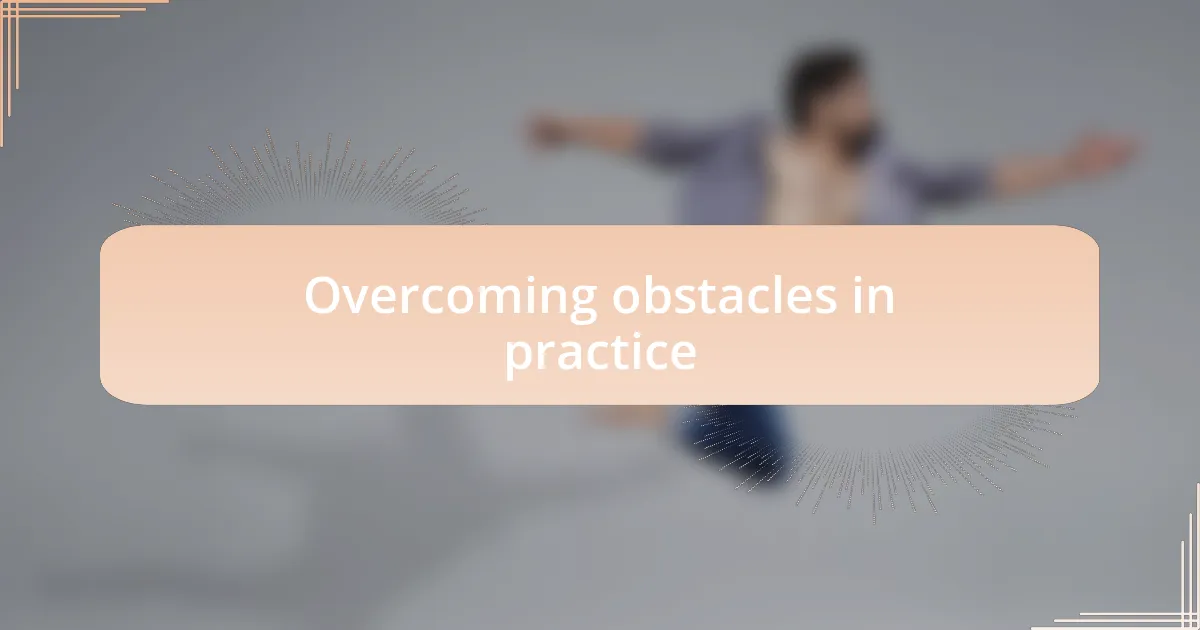
Overcoming obstacles in practice
Practicing breakdancing often feels like navigating a maze of obstacles, both physical and mental. I still vividly recall a few sessions where my body just didn’t want to cooperate; my freezes felt weak and unsteady. In those moments, I questioned whether I would ever get back to the strength I once had. Have you ever experienced that sense of defeat, wondering if your progress has stalled?
One of the hardest hurdles I’ve faced is the frustration that comes with mastering a difficult move. Learning the windmill was a prime example for me. I ended up with sore muscles and a bruised ego before I finally started to get it right. Reflecting on that, I realized that every failure brought me one step closer to success, and it taught me the importance of patience in my practice. How often do we overlook the small victories when they feel overshadowed by tougher challenges?
There are days when I doubt my abilities and wonder if I should just quit, especially after a rough practice. But then there’s a moment—a spark during a session—where I suddenly nail a transition or feel the rhythm just right. It’s those flashes of success that remind me why I dance. Have you found those little moments that reignite your passion when everything else seems daunting?
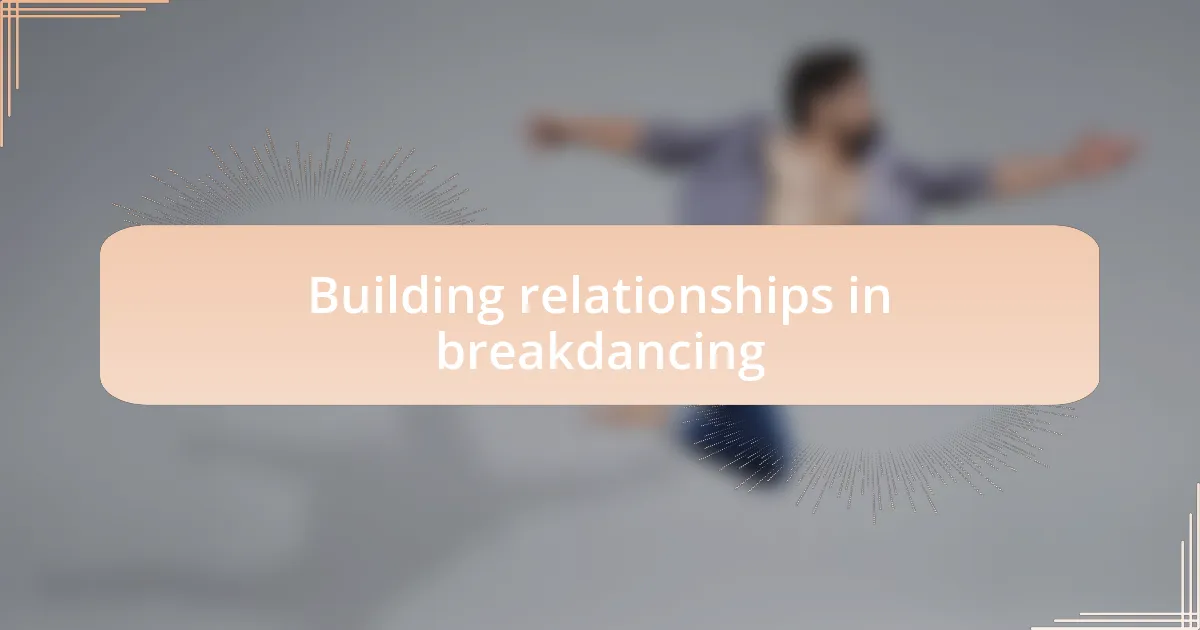
Building relationships in breakdancing
Building relationships in breakdancing is essential, not just for learning and growth, but for creating a supportive community. I remember my first cypher; I felt anxious and out of place. But as I shared my moves and connected with others, those nerves slowly melted away. Have you ever felt that electric connection with others on the dance floor?
Collaboration within the breakdancing community can truly elevate your skills. During a workshop, I paired up with a fellow dancer to work on our freezes. As we exchanged tips and encouraged each other, I realized that our bond deepened not just through practice, but through shared struggles. Who would have thought that vulnerability could forge such strong relationships?
I’ve seen the power of mentorship firsthand. A more experienced dancer took me under their wing when I was struggling with my footwork. Their guidance didn’t just improve my skills; it built a trust and camaraderie that kept me motivated. Have you ever had someone believe in you when you didn’t believe in yourself?